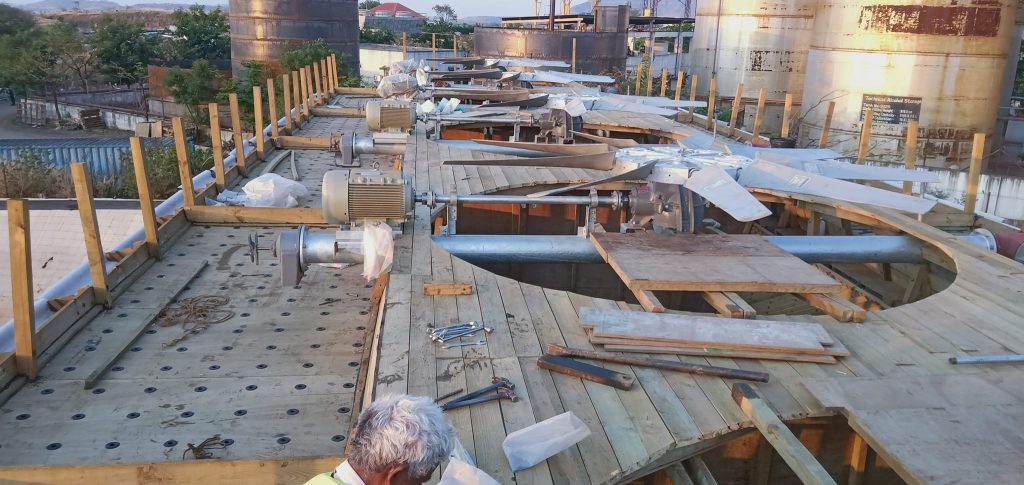Cooling towers play a critical role in steel mills by managing the heat generated during various steel production processes. Their primary function is to cool and recycle water used in cooling equipment, machinery, and molten metal, ensuring efficient and continuous operations. Here’s how cooling towers are used in steel mills:
1. Cooling Hot Process Water
Steel production involves high-temperature processes like:
- Blast furnaces & basic oxygen furnaces (BOF) – Molten metal and slag require water cooling.
- Continuous casting machines – Water cools the moulds and solidifies steel strands.
- Rolling mills – Water cools hot-rolled steel sheets and bars.
The cooling tower removes heat from this water, allowing it to be reused.
2. Heat Recovery & Energy Efficiency
- Cooling towers help recover waste heat from processes, which can sometimes be repurposed for other plant needs.
- Closed-loop systems minimize water wastage, reducing operational costs.
3. Protecting Equipment
- Overheating can damage furnaces, rolling mills, and other machinery. Cooling towers maintain optimal temperatures, extending equipment lifespan.
4. Environmental Compliance
- Steel mills must control thermal pollution in wastewater. Cooling towers reduce the temperature of discharged water to meet environmental regulations.
5. Types of Cooling Towers Used
- Wet (Evaporative) Cooling Towers – Most common, using evaporation to cool water.
- Dry Cooling Towers – Used where water conservation is critical (no evaporation).
- Hybrid Cooling Towers – Combine wet and dry cooling for efficiency.
6. Reducing Water Consumption
- Instead of using once-through cooling (which wastes water), cooling towers recycle water, making steel production more sustainable.
Key Benefits in Steel Mills:
- Process Continuity – Prevents downtime due to overheating.
- Cost Savings – Reduces water and energy consumption.
- Regulatory Compliance – Helps meet environmental discharge standards.
Improved Product Quality – Consistent cooling ensures better steel properties
